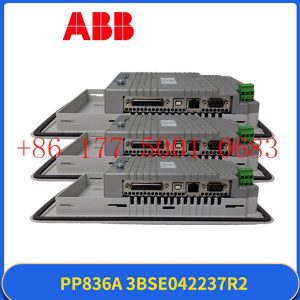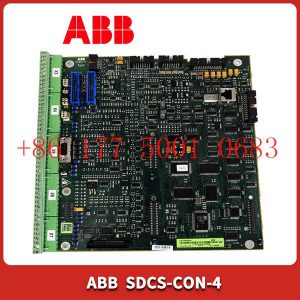Description
hardware flow control. It is an ideal choice in the field of industrial automation.
Why is the industrial Internet inseparable from industrial control?
ABB Global CEO Ulrich Spiesshofer recently accepted an exclusive interview with a reporter from Caijing in New York. He believes that the global manufacturing industry is
undergoing drastic changes. The era of labor arbitrage is over. Labor costs are no longer the focus of competition. The future of manufacturing lies in In factories that are smaller,
closer to consumers, and more agile. Artificial intelligence ( AI ) is the most important technology shaping the future of manufacturing. Currently, AI technology is mainly used in the
consumer field, but its large-scale application in the industrial field and among enterprises is more critical.
Digital transformation has been a keyword for global manufacturing giants in the past two years, and the industrial Internet is the implementation form of digital transformation.
General Electric (GE), Siemens and ABB are all leaders in this regard . Spiesshofer believes that GE”s industrial Internet only collects data and analyzes but cannot control it.
As the world”s two largest industrial automation suppliers, ABB and Siemens have the ability to control equipment, which is a significant difference from GE.
ABB is headquartered in Zurich, Switzerland. Its history can be traced back to the 1880s. It started from the original electrical manufacturing business and has developed into an international manufacturing
giant including electrical products, robotics and motion control, industrial automation and power grid. In 2017, ABB”s revenue was US$34.3 billion, ranking 341st among the
Fortune 500 companies. Spiesshofer has served as CEO for nearly five years since taking office in September 2013.
Below are the details of the interview.
The era of labor arbitrage is over
Caijing: Is 2018 a good year for the manufacturing industry?
Spiesshofer: From a global perspective, GDP is growing and consumption is also growing. Overall positive.
Caijing: What crucial changes are taking place in the manufacturing industry?
Spiesshofer: The jobs of the future will be different from the jobs of the past. In the Middle Ages, craftsmen moved between villages, taking their tools with them to work where
there was demand; later we invented factories, integrated supply and demand, and invented logistics; later people realized that there was labor arbitrage (Labor Arbitrage, Refers to
the existence of moving industries that have lost technological advantages and technical barriers to areas with low labor prices to increase profits by reducing labor costs), so we place
factories in emerging countries to benefit from labor arbitrage.
Now, with the development of modern automation and robotics, we can break this picture and bring value addition closer to demand. I think the future of manufacturing is
in factories that are smaller, closer to consumers, and more agile. I believe that the global logistics chain will also be reduced in the future because we will produce products closer to consumers.
The era of labor arbitrage shaping the global manufacturing landscape will be over because we can offset this arbitrage.
Recently we opened a new factory in Germany. Due to the adoption of intelligent automation technology, its unit cost is exactly the same as that of the best factories in
China. So I think the local market will be repositioned in the future, and the positioning of competitiveness will also change from just considering costs to focusing more on technology and value.
Caijing: Many people are complaining that automation has caused people to lose their jobs, and artificial intelligence technology has made the complaints louder
. But these new technologies are also creating new jobs. How do you see the relationship between the two?
Spiesshofer: In 1990, one-third of the world”s population lived below the extreme poverty line. Today, only 8% rely on technology. In fact, countries with the
highest robot densities, such as Germany, South Korea, Singapore, and Japan, also have the lowest unemployment rates. Robots combined with educated people can create prosperity, produce more
affordable goods, and lead to economic growth. Government, education and business need to work together to keep up with the changing world.
Clearly, millions of jobs are disappearing, but millions of new ones are being created. Taking our own business as an example, we used to have many
employees doing metal casting and forging work, but now these tasks are automated. But now we have more employees working in the service industry, developing apps, and working with customers.
So I think we should not be afraid of change, but should lead our employees to manage change and promote change. If we succeed, global employment will eventually grow.
https://www.xmamazon.com
https://www.xmamazon.com
https://www.plcdcs.com/
www.module-plc.com/
https://www.ymgk.com
CC-PAOH01 51405039-175 HONEYWELL HART Analog Output Module
CC-PAIN01 51410069-175 HONEYWELL Analog Input Module
CC-PAIX01 51405038-275 HONEYWELL Experion High Level Analog Input Module
CC-PAIH51 51410069-275 HONEYWELL Analog Input Module
CC-PAIH01 51405038-175 HONEYWELL Analog Input with HART
CC-PAIH02 51405038-375 HONEYWELL C300 Hart Analog Input
6DD1683-0BC5 Siemens Power Supply
1746-NI16I Allen-Bradley SLC 500 Analog I/O Module
1C31125G02 Westinghouse Digital Output Module
1X00781H01L EMERSON POWER SUPPLY
1C31132G01 Westinghouse Analog Output
P0904HN LZS 1500-3FOX FOXBORO Power module
CR-GEN0-M6400R3 DALSA High speed CCD line scanning camera
DSQC661 3HAC026253-001 ABB Power Supply
DTDX991A 61430001-UW ABB Analog Module
DSQC609 3HAC14178-1 PBSE5117 ABB Power Supply
1747-BA Allen-Bradley SLC 500 Lithium Battery
5SHX06F6004 3BHB003387R0101 ABB IGCT module
DTCC901B DCC2390A ABB Excitation system controller
651T-0600 Acromag Single Channel Process Current Transmitter/Isolator
12KM02E-V0002 3EGM030300R0002 ABB Multi-axis control unit
T8448 ICS Triplex Trusted TMR 24Vdc Zone Interface Module
T8161B ICS TRIPLEX Trusted TMR Processor
P026MX FOXBORO Fbm Modules
P0916VL FOXBORO Termination Cable
P0916VB FOXBORO Termination Cable
FBM240 P0917GZ FOXBORO DCS CARD MODULE FBM
FBM208 P0914TB FOXBORO Redundant 0-20 Module w/Readback
FBM206 P0916CQ FOXBORO Terminal Assembly
FBM204 P0914SY FOXBORO Channel Isolated
FBM202 P0926EQ FOXBORO Channel Isolated 8 Input
FBM201e P0924TR FOXBORO Analog Input Interface Modules
FBM201D P0922YK FOXBORO Analog Input Interface Modules
57552-4 RELIANCE Universal Drive Controller Module
57405 Reliance I/O Analog DCS Module
57401 RELIANCE Digital I/O Drive
57C430 RELIANCE Processor Module 6010
TRICONEX CM2201 TRICONEX Communication Module
57C404C RELIANCE COMMUNICATION NETWORK MODULE
VME162PA-344SE Motorola Embedded Controller
57652 0-57652-D RELIANCE Universal Drive Controller Module
57C443 RELIANCE Remote I/O Scanner Module
57C435 RELIANCE 7010 Series Processor Module
57C409 RELIANCE 2 Channel Analog Input Module
57C411 RELIANCE Resolver Input Module
57C410A RELIANCE Analog Output Module
57C404C RELIANCE COMMUNICATION NETWORK MODULE
HE693ADC410A GE Analog Input Modules
FBM203 P0914SV FOXBORO Channel Isolated 8 Input RTD
IC754CSL12CTD GE Operator Interface Terminal
IC754VSI12VTD GE 12-inch color TFT touch fast panel display
00-108-947 KUKA KRC2 MR-E MOTOR CABLE









Reviews
There are no reviews yet.